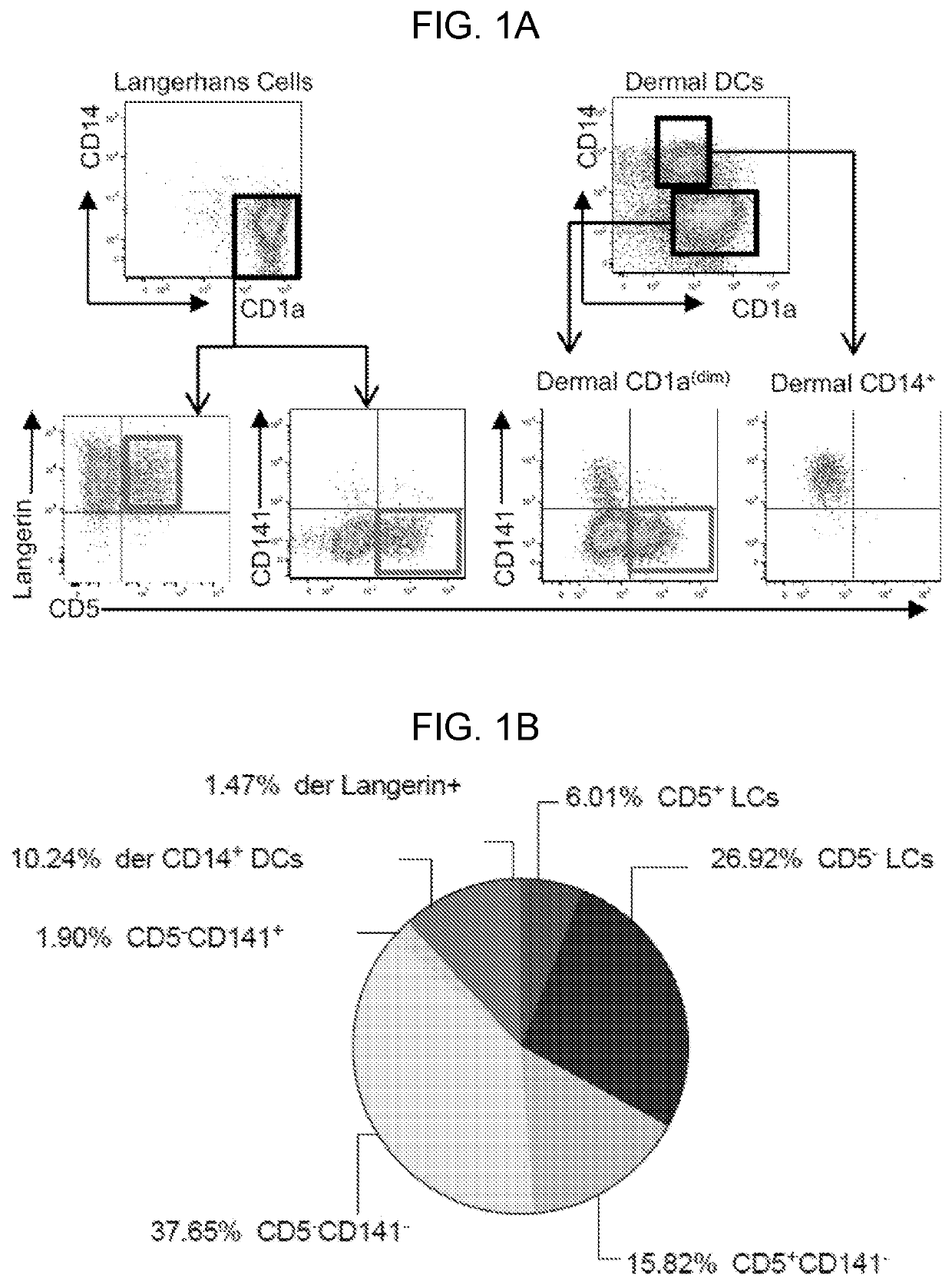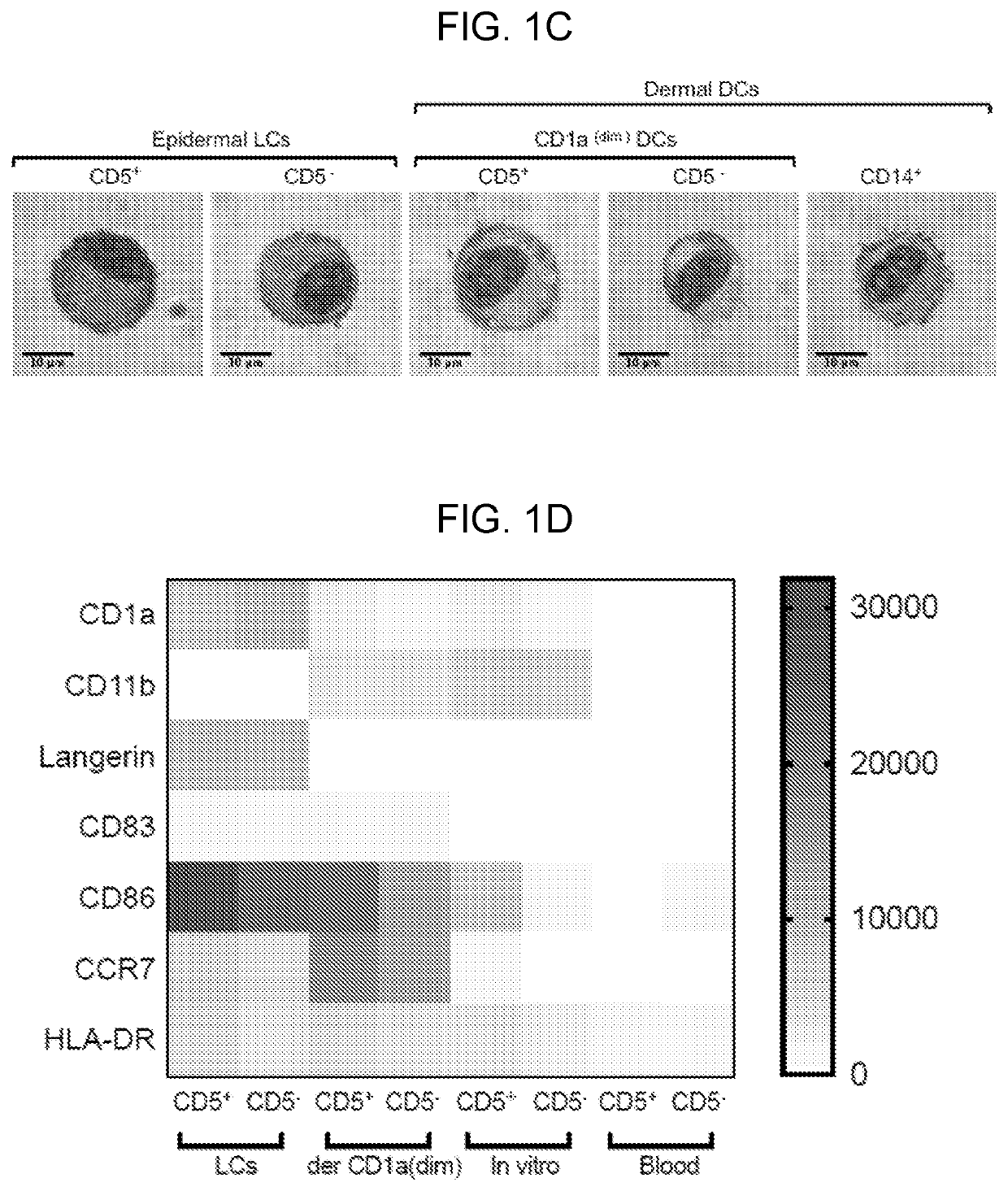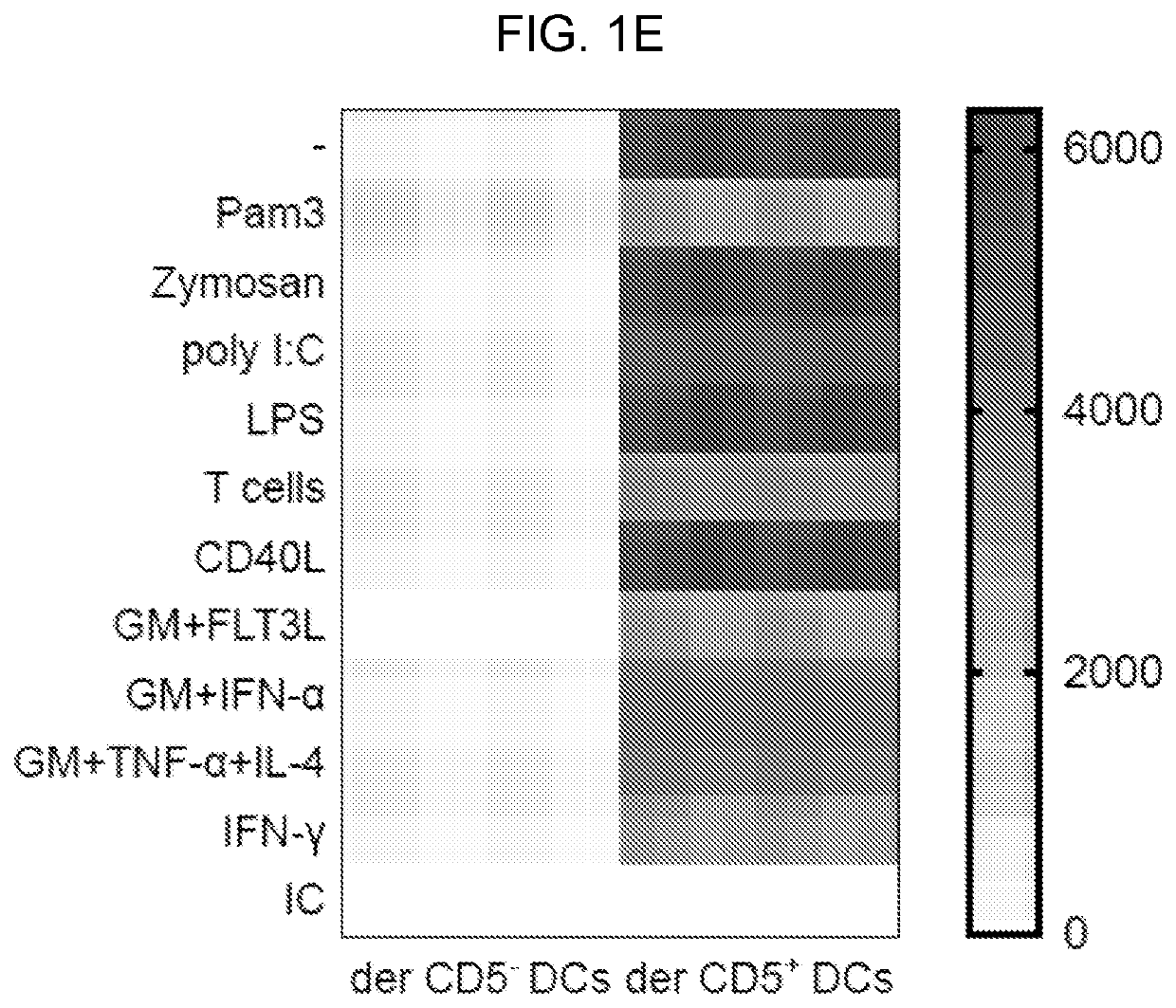Detection of CD5 and methods and compositions for modulating CD5
a technology of cd5 and detection method, which is applied in the direction of immunological disorders, antibodies, instruments, etc., can solve the problem that the role of specific cdc subsets in psoriasis remains unclear
- Summary
- Abstract
- Description
- Claims
- Application Information
AI Technical Summary
Benefits of technology
Problems solved by technology
Method used
Image
Examples
example 1
ation of a Novel Skin Inflammatory Dendritic Cell Marked by CD5 that Dominates Psoriatic Plaques
[0146]The following example describes the discovery that Langerhans cells and dermal CD1a(dim)CD141− DCs are heterogeneous, containing terminally differentiating DCs that express CD5. CD5 signals DCs to produce cytokines, their role in inflammatory skin diseases is supported by their elevated numbers in psoriasis plaques and enhanced ability to drive Th1 and Th22 cell responses. Our findings also show that CD5 KO mice were protected from psoriasis-like disease, demonstrating that CD5 is required for psoriasis inflammation. As such, it is believed that CD5+ DCs contribute to exacerbate inflammation in human psoriasis.
[0147]CD5 Marks a Subset of Epidermal LCs and Dermal CD1a(dim) DCs in Healthy Skin
[0148]Human skin is known to contain four distinct myeloid DC subsets. Three of these, marked as CD1a(dim)CD141−, CD1a(dim)CD141+, or CD1a−CD14+, are found in the dermis, while CD1a(hi)Langerin+ ...
example 2
ce Failed to Reject Tumor
[0253]The following example describes studies showing that CD5 deficient mice failed to reject a tumor. Thus, it is currently thought that CD5 is critical for tumor rejection. As such, enhancement of CD5 differentiation (elaborated in Example 1) can be effective in the management and treatment of cancer.
[0254]The tumor growth data (see e.g., FIG. 13) from the CD5 knockout mice injected with 1969. 1969 is a regressor tumor derived from a female C57BL6 Rag2− / − mouse. The CD5 KO and WT mice showed differences in tumor size (see e.g., FIG. 13C).
example 3
CD5
[0255]CD5+ DC Express the IFN-γ-Inducing Factor IL-18
[0256]To understand the mechanism by which CD5+ DCs polarize specialized T cell responses, the cytokine expression patterns of CD5+ and CD5− DCs that were sorted from the epidermal or dermal leukocytes were analyzed by quantitative real time PCR (qPCR). As shown in FIG. 14A, CD5+ LCs as well as CD5+ dermal DCs expressed approximately three-fold higher levels of IL-18, compared to their CD5− counterparts. Immunofluorescence staining of activated skin DCs validated the expression of IL-18 protein by the CD5+ DCs in both epidermis and dermis (FIG. 14B). To establish a role for IL-18 in CD5+ DC-dependent T cell activation, co-cultures of DC subsets and allogeneic naive T cells were supplemented with either a neutralizing anti-IL-18 mAb or an isotype-matched control. Addition of neutralizing anti-IL-18 inhibited the proliferation of CD8+ T cells primed with CD5+ DCs by approximately 40% (FIG. 14C). The CD8+ T cells that were primed ...
PUM
| Property | Measurement | Unit |
|---|---|---|
| thickness | aaaaa | aaaaa |
| thickness | aaaaa | aaaaa |
| thickness | aaaaa | aaaaa |
Abstract
Description
Claims
Application Information
 Login to View More
Login to View More - R&D
- Intellectual Property
- Life Sciences
- Materials
- Tech Scout
- Unparalleled Data Quality
- Higher Quality Content
- 60% Fewer Hallucinations
Browse by: Latest US Patents, China's latest patents, Technical Efficacy Thesaurus, Application Domain, Technology Topic, Popular Technical Reports.
© 2025 PatSnap. All rights reserved.Legal|Privacy policy|Modern Slavery Act Transparency Statement|Sitemap|About US| Contact US: help@patsnap.com



